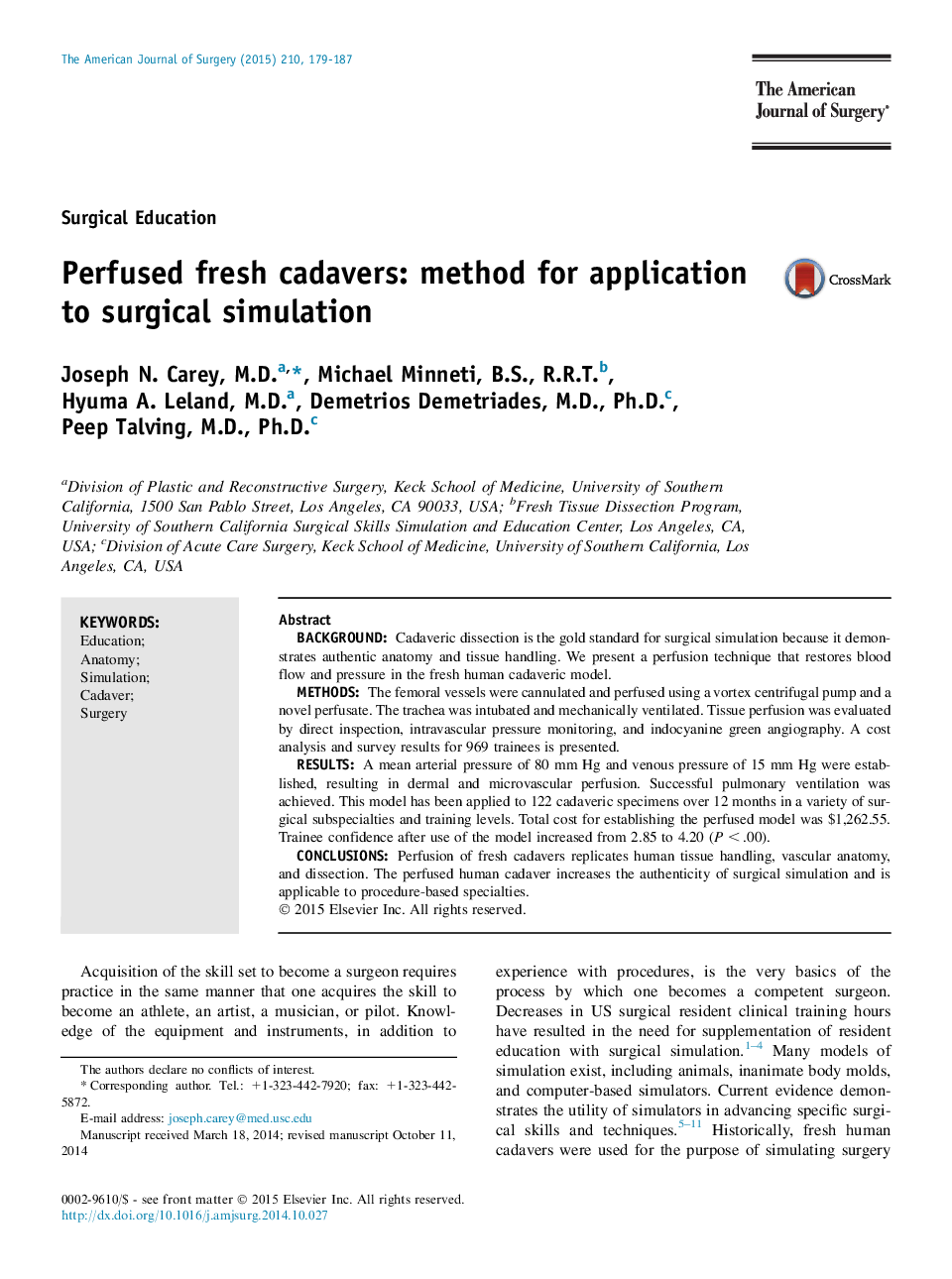| Article ID | Journal | Published Year | Pages | File Type |
|---|---|---|---|---|
| 4278453 | The American Journal of Surgery | 2015 | 9 Pages |
BackgroundCadaveric dissection is the gold standard for surgical simulation because it demonstrates authentic anatomy and tissue handling. We present a perfusion technique that restores blood flow and pressure in the fresh human cadaveric model.MethodsThe femoral vessels were cannulated and perfused using a vortex centrifugal pump and a novel perfusate. The trachea was intubated and mechanically ventilated. Tissue perfusion was evaluated by direct inspection, intravascular pressure monitoring, and indocyanine green angiography. A cost analysis and survey results for 969 trainees is presented.ResultsA mean arterial pressure of 80 mm Hg and venous pressure of 15 mm Hg were established, resulting in dermal and microvascular perfusion. Successful pulmonary ventilation was achieved. This model has been applied to 122 cadaveric specimens over 12 months in a variety of surgical subspecialties and training levels. Total cost for establishing the perfused model was $1,262.55. Trainee confidence after use of the model increased from 2.85 to 4.20 (P < .00).ConclusionsPerfusion of fresh cadavers replicates human tissue handling, vascular anatomy, and dissection. The perfused human cadaver increases the authenticity of surgical simulation and is applicable to procedure-based specialties.
